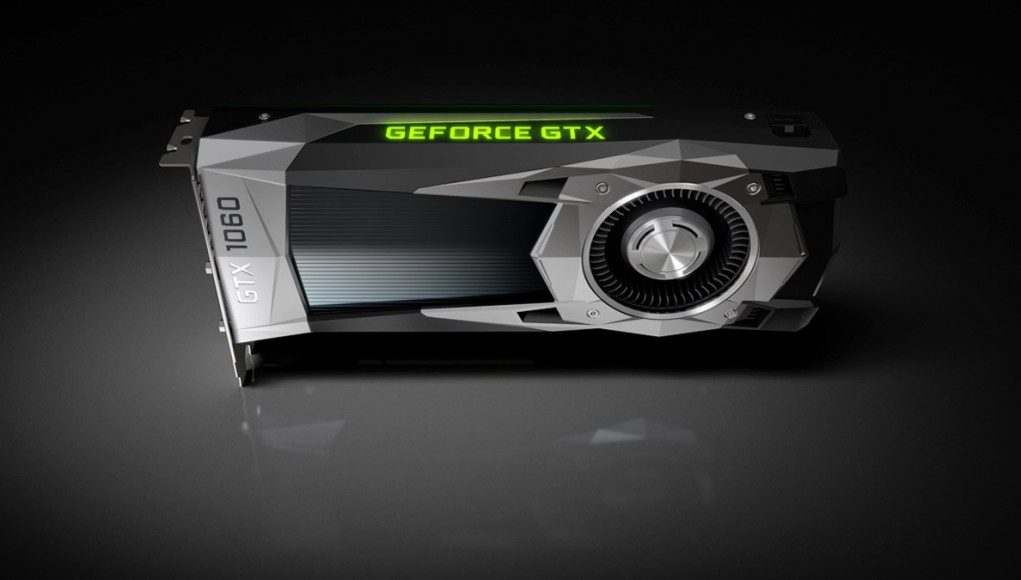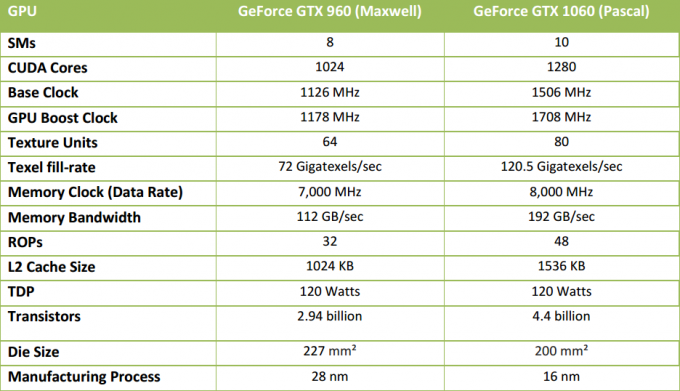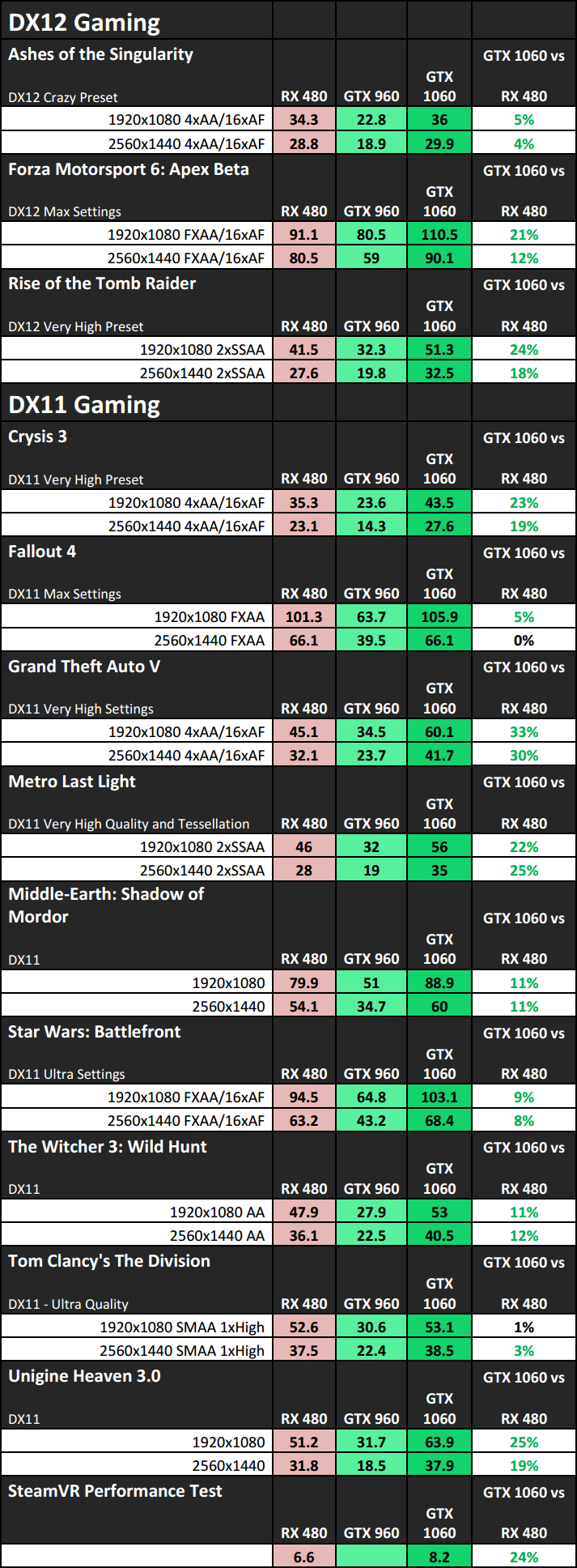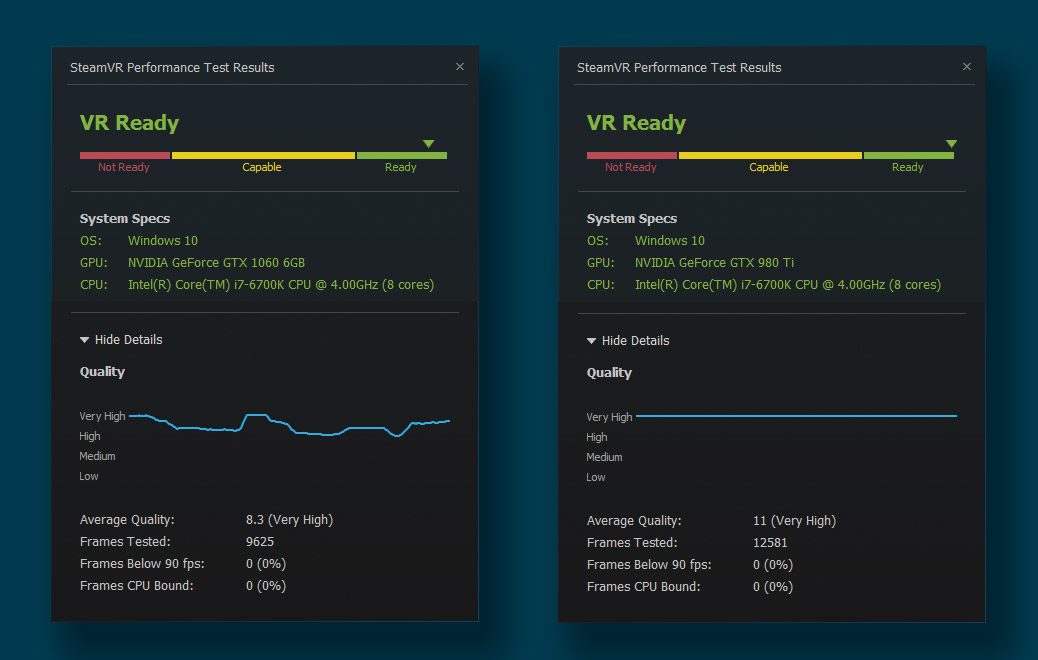Today marks the launch of NVIDIA’s GTX 1060, the least expensive of the company’s 10-series GPUs so far revealed. According to Nvidia, the GTX 1060 matches the performance of the former flagship card, the GTX 980, but at only 120 watts. Starting at $249, the 1060 faces off against AMD’s $199 RX 480.
The VR Ready NVIDIA GTX 1060 goes on sale today. You’ll be able to find it sold by third parties at stores like Amazon and Newegg starting at $249. As with the GTX 1070 and 1080, Nvidia is also selling a ‘Founders Edition’ of the 1060 for $299, and you’ll only be able to find that direct from the company.
GTX 1060 Full Specs (based on base clock)
NVIDIA Benchmarks GTX 1060 vs AMD RX 480
Nvidia has also published their own benchmark results which compared the GTX 1060 against AMD’s RX 480, both of which are the contending choices for ‘best VR Ready budget GPU’. As a comparison against the last generation, benchmark results from the GTX 960 are included as well. It should of course be duly noted that the following are Nvidia’s own internal testing results. We’ll have our own VR results published soon.
Results measured on Core i7-5960X CPU, Windows 10 64-bit, 368.64 NVIDIA drivers, Catalyst 16.6.2 AMD drivers with default settings. Both GPUs are running at standard clock speeds.
Take care drawing any conclusions from the above benchmarks. Although we’re sure the figures will be accurate, the examples given use very specific use cases in terms of AA and AF that may skew results in favor of the Nvidia card. We’ll be back soon with our own internal tests which will include a wider variety of configurations and VR game benchmarks.
GTX 1060 Hands-on and Quick Comparison to GTX 980 Ti
Based on our early impressions, the GTX 1060 is quite the marvel, bringing the power of the last generation’s flagship GTX 980—which itself launched at $549—for a reasonable $249. Mmmm the smell of sweet technological progress.
Our early tests with the GTX 1060 show that the card easily hits the bar for VR Ready, capable of holding a steady 90 FPS in a selection HTC Vive and Oculus Rift titles.
Giving the GTX 1060 a quick check against the GTX 980 Ti using the SteamVR Performance Test benchmark, we can see that the 1060 scores an 8.3 out of 11 with the vast majority of frames falling into the ‘Very High’ category. Meanwhile, the unwavering 980 Ti keeps the quality at the top of ‘Very High’ across the board.
GTX 1060’s Quirk – No SLI
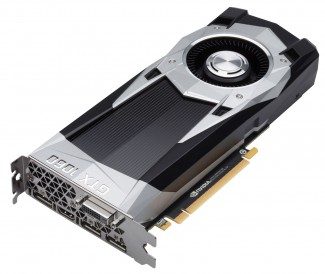 Curiously, Nvidia says that the GTX 1060 doesn’t support SLI (the ability to use two GPUs in tandem). It isn’t entirely clear why this choice was made, especially as both the GTX 1070 and 1080 can do SLI with no problem.
Curiously, Nvidia says that the GTX 1060 doesn’t support SLI (the ability to use two GPUs in tandem). It isn’t entirely clear why this choice was made, especially as both the GTX 1070 and 1080 can do SLI with no problem.
Nvidia notes in their 1060 documentation:
The GeForce GTX 1060 delivers maximum performance and power efficiency in its class. However for gamers looking for more performance and the smoothest gameplay, we recommend a higher-end single GPU solution such as the GeForce GTX 1070 or GTX 1080. These GPUs will provide the best gaming experience and power efficiency. Therefore the GTX 1060 will not support SLI and we will be focusing all of our SLI resources on delivering the greatest experience on the world’s fastest gaming PCs.
NOTE: For DirectX 12 applications that support MDA Mode or LDA Explicit, multiple GeForce GTX 1060 cards can be combined together to potentially improve performance. For more details, please refer to the GeForce GTX 1080 Whitepaper.
One hint may come from the company’s refocused efforts on SLI. It was mentioned back during the announcement of the 1080 a few months ago that Nvidia is putting a greater emphasis on dual GPU use-cases rather than configurations running three or more cards.
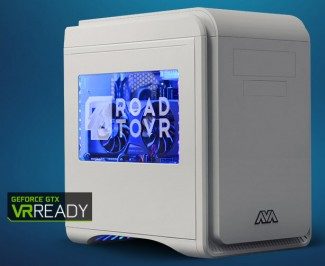 We partnered with AVA Direct to create the Exemplar Ultimate, our high-end VR hardware reference point against which we perform our tests and reviews. Exemplar is designed to push virtual reality experiences above and beyond what’s possible with systems built to lesser recommended VR specifications.
We partnered with AVA Direct to create the Exemplar Ultimate, our high-end VR hardware reference point against which we perform our tests and reviews. Exemplar is designed to push virtual reality experiences above and beyond what’s possible with systems built to lesser recommended VR specifications.
Disclosure: NVIDIA provided Road to VR with a GTX 1060 GPU for review purposes.

